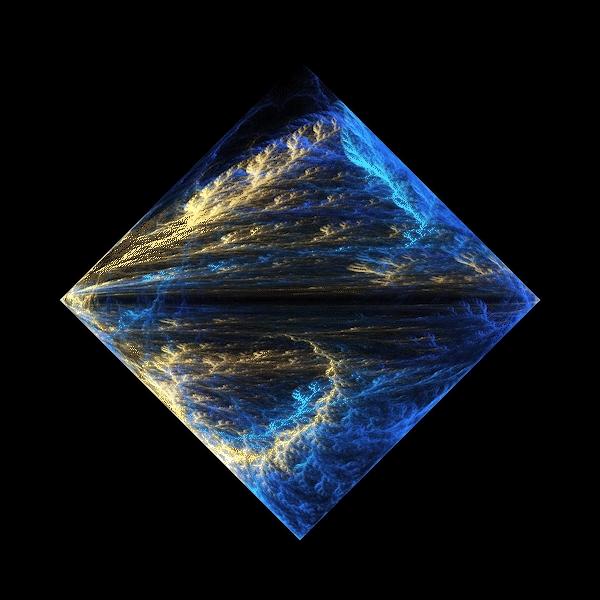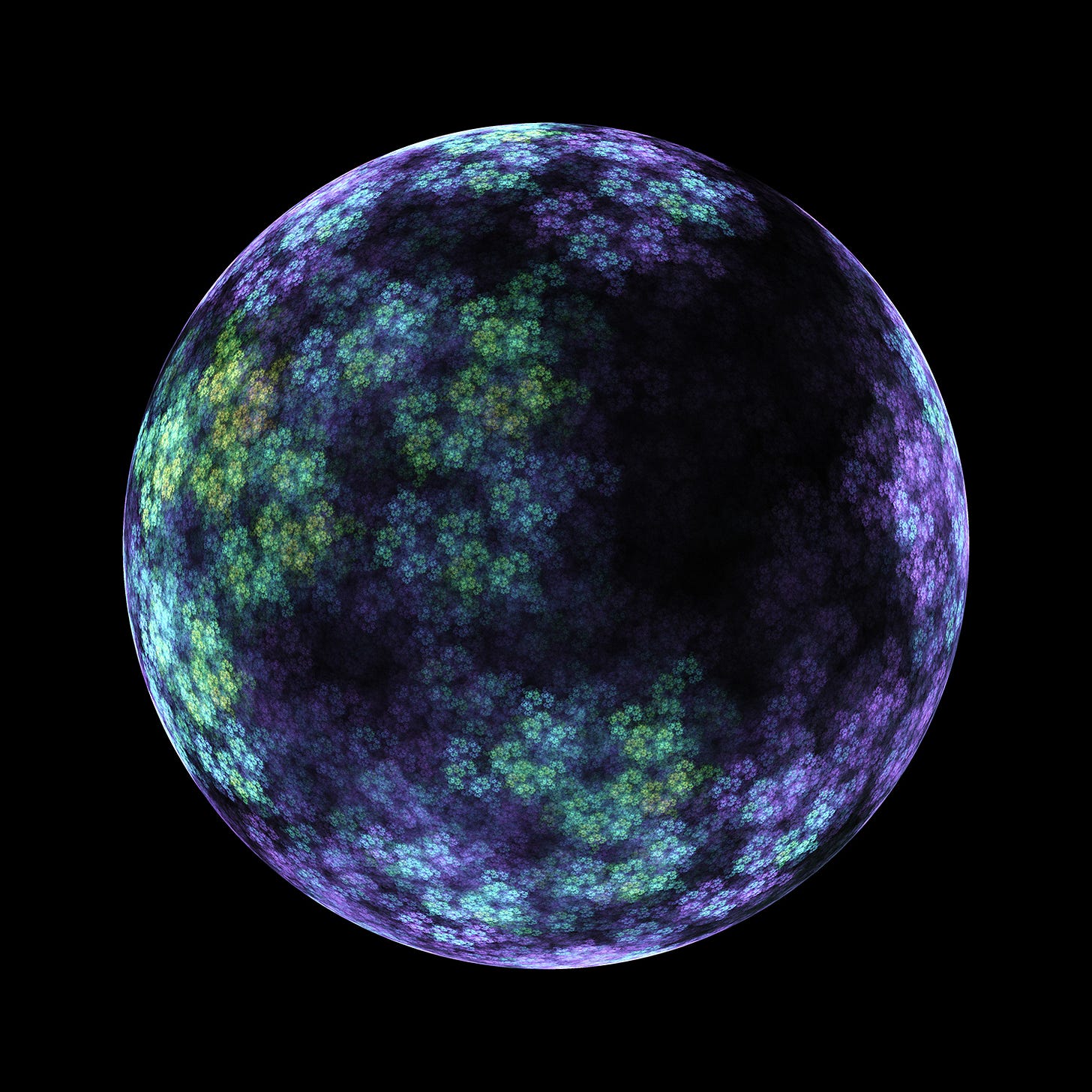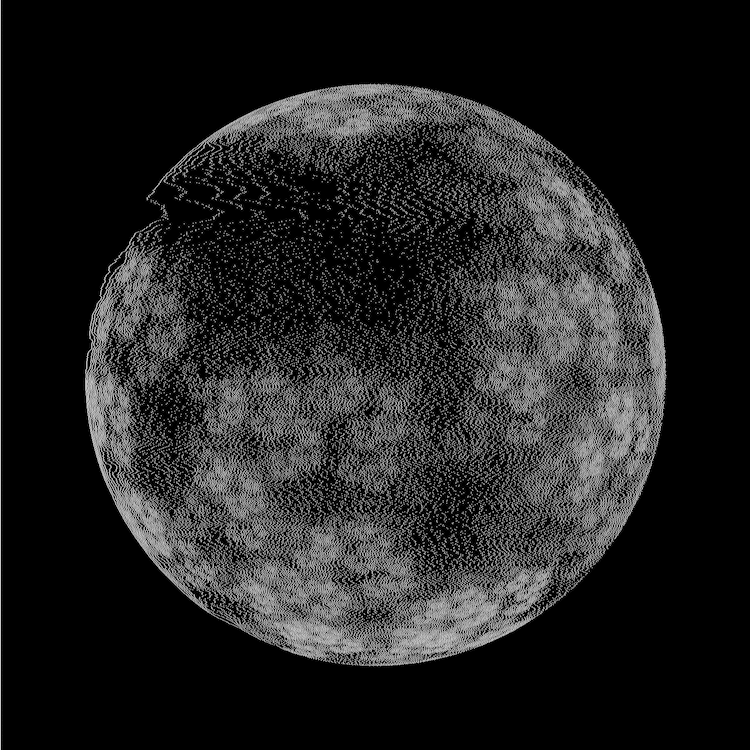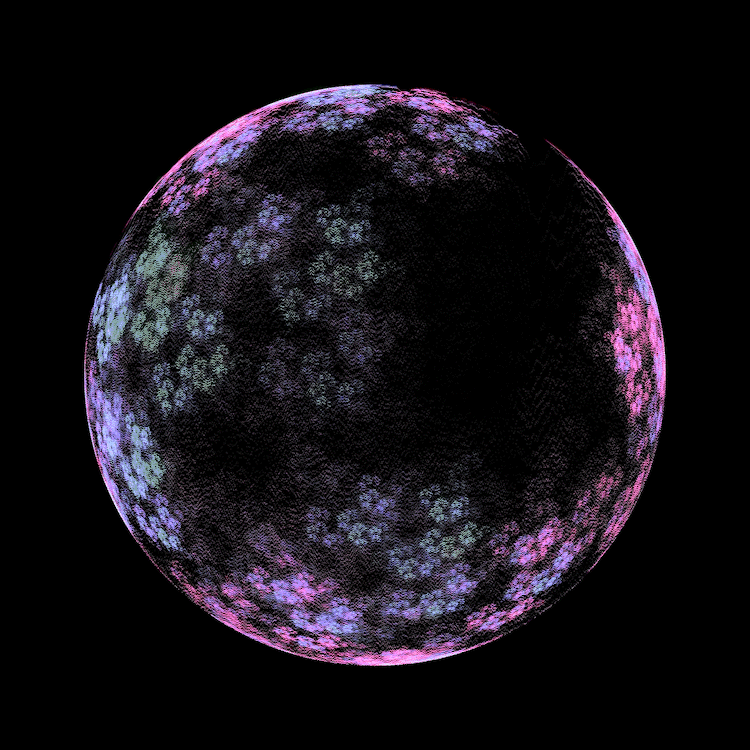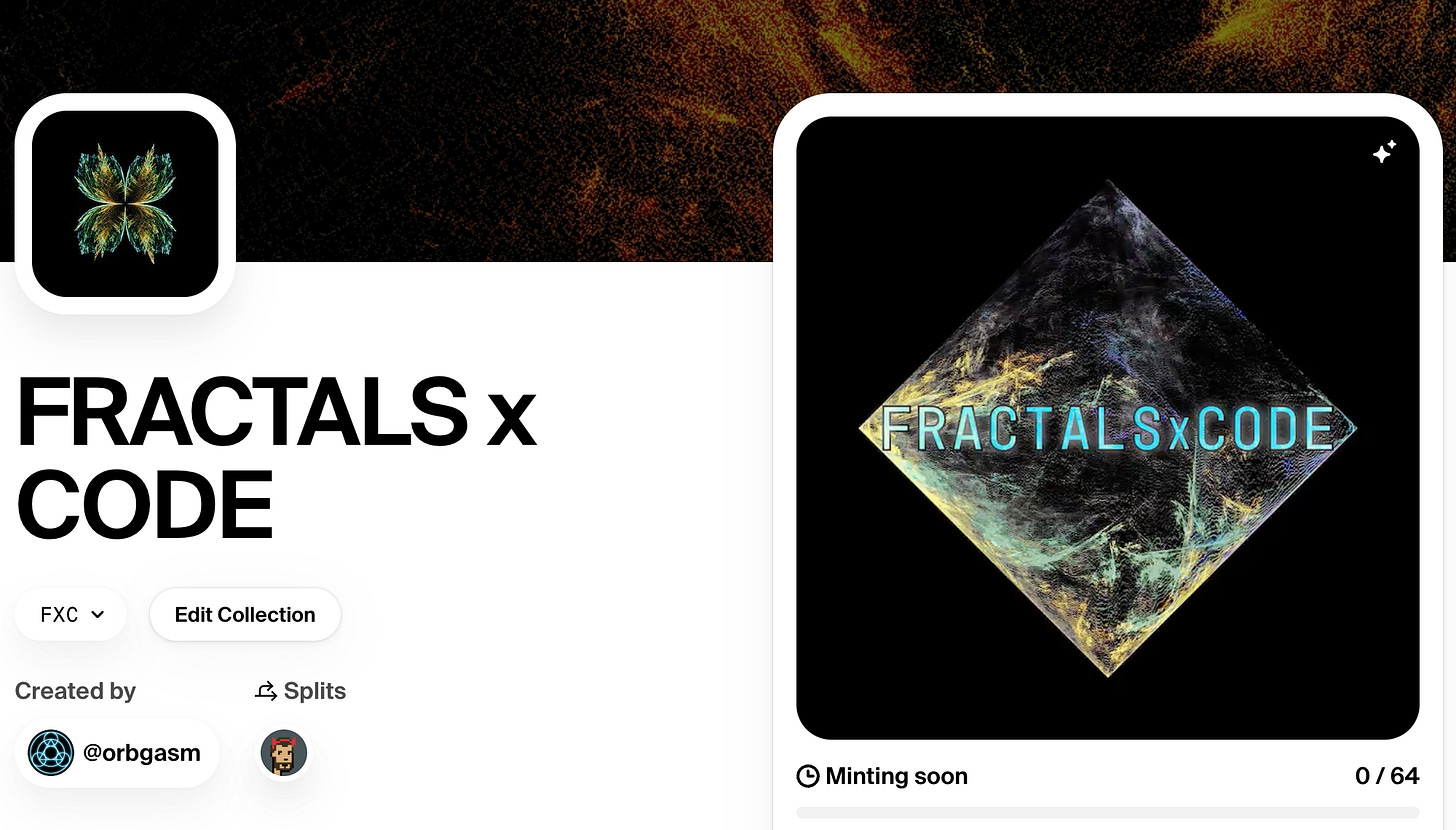Fractals x Code
A visual exploration of math and programming
There are very few things that I have created purely through digital means, that have brought me so much satisfaction as this project has. A collaboration with Luiz Widmer, FxC covers quite a few things that bring me joy in this life, not the least of which is trippy seamless loops and generative art.

What is FxC?
FRACTALSxCODE is, at its core, a thoughtful exploration of fractals and code. 64 distinct pieces represent different part of our journeys through visual mathematics and generative pixel mapping. Both Widmer and myself have a deep love of the fractal nature of the universe, and these digital experiments are one major stop along our personal paths through art.
Each token has its own unique combination of one of 3 parent forms, one of 16 specific types, one of 3 directional pixel flows, and one of 6 different hue values. Of the 64 total, there are 3 absolutely unique, stand-alone loops that have their own unique types with advanced pixel flows. All tokens are minted with the erc-721 token standard.
Who are we?
Widmer and I met back in early 2021, on the now defunct Foundation Discord server. We were both learning how to navigate the NFT world, and were selling and buying NFTs on various blockchains. After some interactions, it became clear that we shared plenty of similar views and appreciations of different types of art. Almost 2 years later now, we are active in our home-base community, Sideways, of which he is one of the SidewaysDAO co-founders.
Fun fact, my very first NFT purchase was one of Widmer’s piece on the now historical H=N marketplace. Check it out here. I find it super cool that after all the highs and lows of the world, the market, and our personal lives, that we are still chasing our ambitions in the space. In my opinion, this collaboration was way overdue.
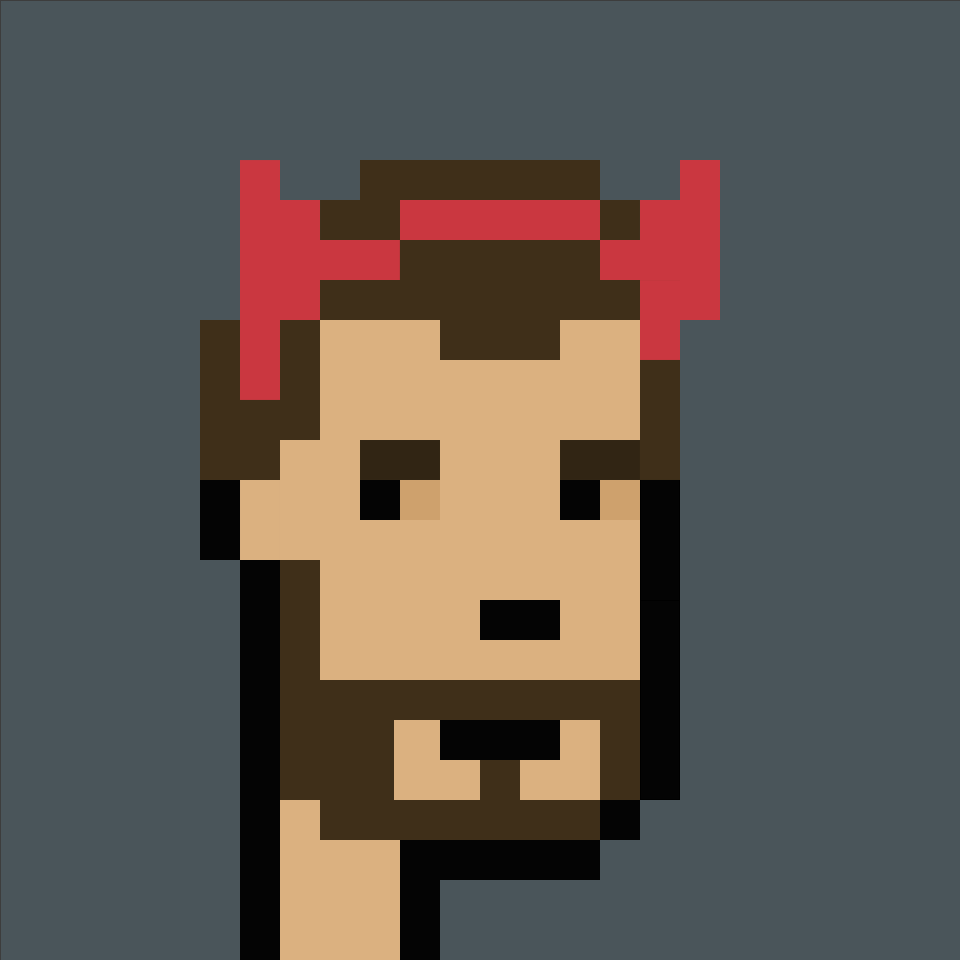
Luiz Widmer is a Brazilian artist that has been active in the NFT scene since early 2021. He has experience across multiple softwares and mediums, ranging from 3D to Fractal generators. He believes that the biggest challenge is to improve upon yourself, and strive to make something greater each and every time. His solution is practice and repetition, within the eternal cycle of improvement.
His inspirations are the laws that make up reality - the simplicity of the complex and vice-versa.
“I’m me, and not me at the same time, since the self is an illusion”
-Luiz Widmer
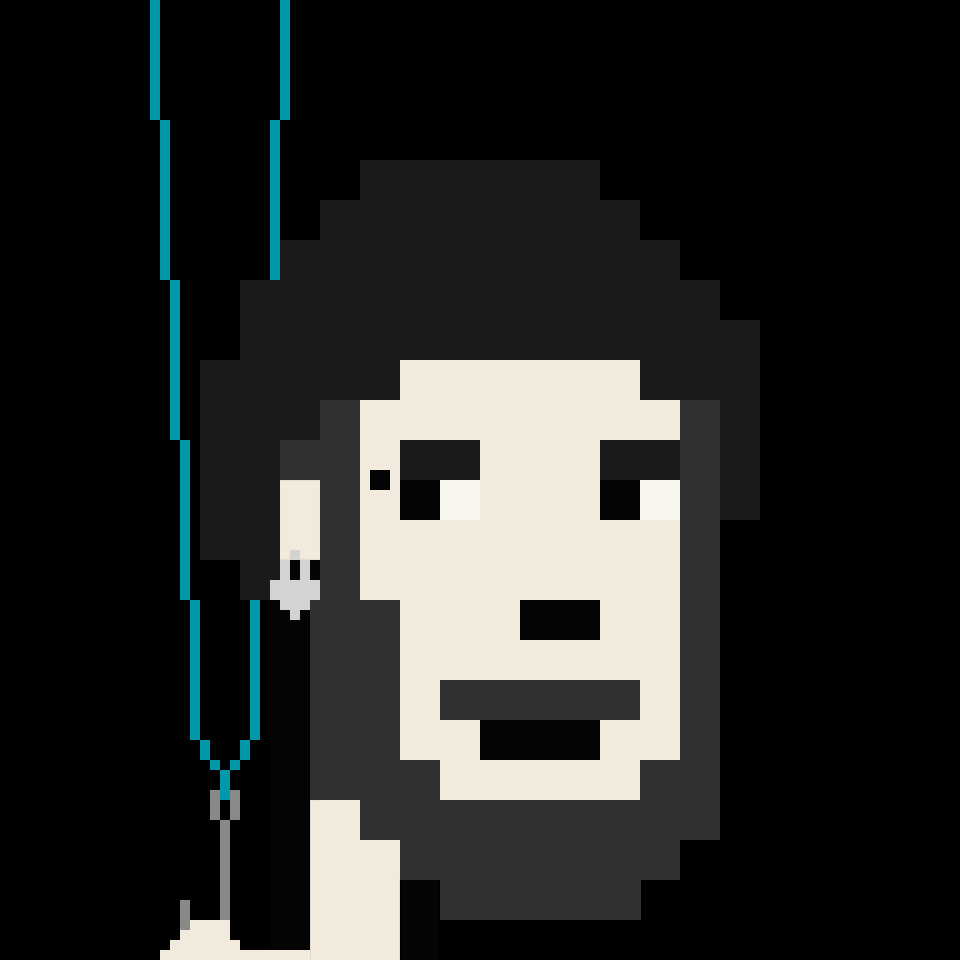
I am a Turkish artist living in Brooklyn, NY, and have been active in the NFT scene since early 2021. While most folks know me for my hook suspension work, I have actively been working with computers, code, and media manipulation software since I was a child. My belief is that the biggest challenge in life is to liberate ourselves from the societal restrictions placed on us - both by others, and ourselves. My solution is to lean into fears and discomfort, and learn from these experiences to break our bodies and minds free of their shackles.
My inspirations are primarily rooted in the psychedelic nature of reality; everything is connected through a fascinating topography of interconnectivity.
“It’s all one big meaningless dumpster fire, until you put out the fire.”
-Orban Isma
How did we create FxC?
FxC starts with Widmer generating fractals. The output then gets passed through a custom script, which creates the looping pixel flows. Everything then gets layered back together in Adobe After Effects. Following is a high level breakdown.
Fractals
Widmer created the source Fractals with Chaotica 2.2.2. His process is simple, yet complex. He uses what is known as transforms, which are mathematical formulas. By adding them and regulating which ones interact with each other, he generates a multitude of complex structures.
It is important to note that this process involves a fair understanding of how fractals work, and how to use the software. It is equally important to understand that it also demands that the operator have an eye for composition, color, and flow. It’s really easy to generate a crappy looking fractal, whereas creating something that really reflects beauty takes patience, skill, and a lot of floating around in liminal space trying to nail it. Watching Widmer chase fractals on live streams has been one of the coolest things I’ve ever seen.
Loops
Back in late Summer/early Fall of 2022, I started writing a script in pure JavaScript while battling some crippling anxiety. It was therapeutic, and kept my mind from wandering to dangerous places.
My script is essentially a pixel mapper that matches pixels to various visual values in static images that are used as input. It then iterates the process according to variables I modify as needed, to create the effect of moving “topography lines.” The output is essentially a seamless, looping GIF. In the case of this project, I am using white pixels, though it is capable of using different RGB values as well. The code leverages gif.js by Johan Nordberg to do the GIF encoder heavy lifting.
The pixel flow is one of the modifiable variables, determining whether I am directing the topography horizontally across the X Axis, or vertically along the Y axis, as well as whether it’s flowing left, right, up, or down. One of the other modifiers is the density parameter, wherein I decide what kind of distance I want between the pixels. There are quite a few other features to the script that I am not utilizing for this project, and you will see in future drops.
Input
A hand picked selection of the finest looking fractals were passed through my script, across both axes, with multiple tests on pixel density for each one. They were then layered back together in After Effects, and various iterations were created by mixing different hue values with different pixel direction layers. We are using Widmer’s choice of color usage in the source fractals as the core 0/360 hue value, and we cycled up increments of 60 from there.
Output
The final output was rendered at a constant bitrate of 50 Mbps, with a number of RGB profiling variations, in order to maximize quality retention in its final h.264 format. All 64 loops are 1500x1500 pixels, looping seamlessly at 30 FPS. Each file had to be squished into under 50MB to meet the Foundation file size restrictions for media uploads, which was ironically an entirely unexpected challenge for us. The final outputs are very crisp. You can see one from our recent Manifold auction here.
When does FxC drop?
Today! If you’re reading this, there’s a good chance the mint went live already. If not, you can start minting at 12PM EST (01.13.23). We would love to reveal the art upon mint completion.
You can view our 3-piece drop leading up to this big one here. We dropped a 10 edition, 5 edition, and 1/1 piece to introduce our work, as well as offer an affordable entry point into our work for those that were curious.
Where does FxC drop?
We are releasing the 64 piece collection using Foundations new DROPS mechanic.
» You can find it by clicking/tapping right here. «
Thank you for reading. I hope you are mesmerized, transfixed, or at the very least enthralled by what we have created here.
We hope these explorations can serve as a brain massage for those seeking a moment of calm-WxO



